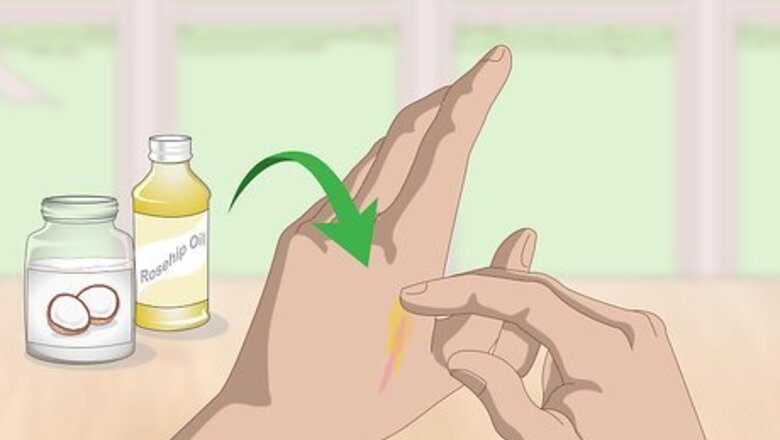
views
Trying Natural Remedies
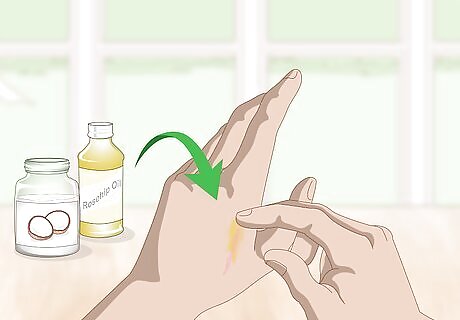
Try a daily treatment with rosehip oil. There’s some evidence that applying rosehip oil to a scar every day over the course of 6 weeks or longer can significantly improve the appearance of a scar. Dilute the rosehip oil in a carrier oil, such as coconut or avocado oil, and apply it to the scar twice a day for several weeks or until you notice a significant improvement. You can find rosehip oil at a health supply store or pharmacy, or buy it online. Don’t apply rosehip oil or any other essential oil directly to your skin, or it could cause irritation. Dilute it in a carrier oil or moisturizer first. Use 15 drops of rosehip oil per 1 fluid ounce (30 mL) of the carrier oil of your choice (such as coconut or olive oil) unless your doctor or a naturopathic medicine practitioner recommends a different dosage.
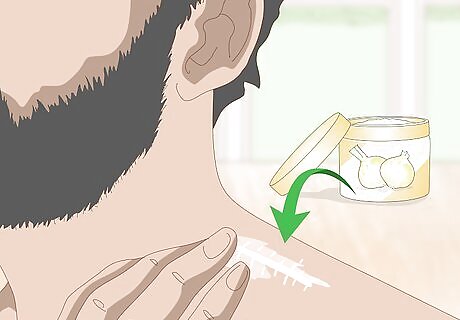
Put onion extract on your scar to soften it. Studies show that applying onion extract to a scar every day for at least 4 weeks can soften the scar tissue and improve its appearance. Look for an over-the-counter scar treatment containing onion extract and carefully follow the directions on the packaging to treat your scar. You can buy pure liquid onion extract or purchase a gel or ointment containing onion extract. If it’s not available in pharmacies or health stores in your area, check online.

Apply vitamin E ointment to your scars with caution. The evidence on whether vitamin E can improve the appearance of scars is mixed. Some research indicates that it may help, while other studies suggest that it could cause irritation and do more harm than good. Talk to your doctor about how to use vitamin E ointment properly, and follow the instructions on the packaging carefully. Start by applying a very thin layer of vitamin E ointment to your scar, and increase the amount you use gradually if you don’t have any adverse reactions. Only use as much as recommended on the product label or by your doctor. Stop using the ointment if you experience side effects such as skin irritation, itching, burning, blistering, redness, or a rash. If you decide to try vitamin E oil or ointment, do a patch test first. Put a small amount of the ointment on a discreet area, such as the back of your knee or behind your ear, and wait 24-48 hours to see if you have a reaction.
Using Medical Treatments
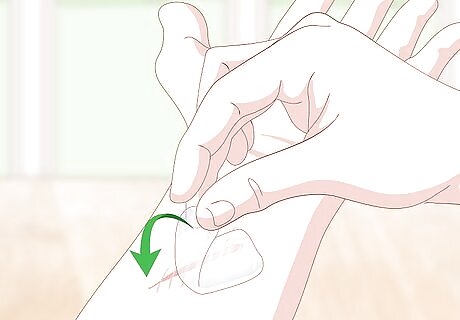
Try an over-the-counter silicone gel on fresh or older scars. Silicone gel or sheeting is one of the most effective home treatments for scars. While silicone works best on fresh scars, it can also soften and reduce the appearance of older scars. For the best results, cover your scar with silicone gel or a silicone sheet for 8-24 hours a day over the course of several months. You can buy silicone gel or silicone scar sheets at most pharmacies. You can also order these treatments online.
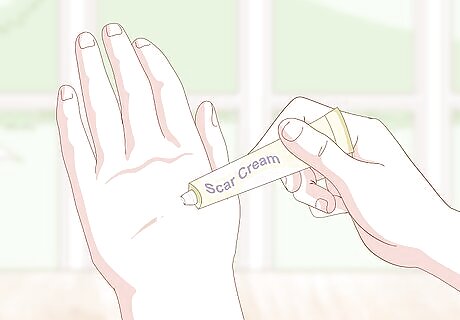
Use a scar-reducing cream for small or light scars. A variety of over-the-counter creams and ointments are available on the market that may be able to help reduce the appearance of scars. Follow the ingredients on the packaging carefully and talk to your doctor or pharmacist if you have any questions or concerns. Look for ointments that include ingredients such as: Retinol creams. These are particularly effective for treating acne scars. Glycolic acid. This ingredient has also been shown to be effective for reducing acne scars, especially when combined with retinoic acid. Protective or moisturizing ingredients, such as oxybenzone (a sunblock), petroleum jelly, or paraffin.
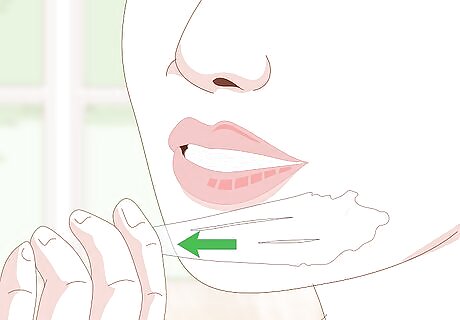
Look into in-office or at-home chemical peels for light scarring. Chemical peels can be helpful for scars that are not too thick or deep, such as acne scars or chicken pox scars. Ask your doctor or dermatologist about getting a medical peel done in their office. You can also buy over-the-counter peels that you can use at home. Over-the-counter peels are not usually as effective as peels done by a medical professional, but they may help reduce the appearance of light scaring. Peels containing glycolic acid or salicylic-mandelic acid may be particularly effective.
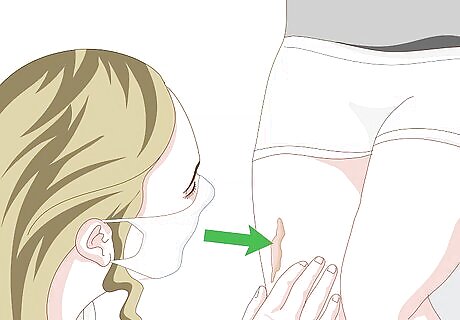
Ask your doctor about fillers for deep scars. If you have a deep or indented scar, a soft-tissue filler may help reduce its appearance. For this treatment, your doctor or dermatologist will inject a soft substance, such as fat or hyaluronic acid, into the tissue under the scar to fill it in. Talk to your doctor about whether this treatment might be right for you. Fillers are a temporary solution since the injected substance breaks down after a while. You may need to repeat this treatment once every 6 months.
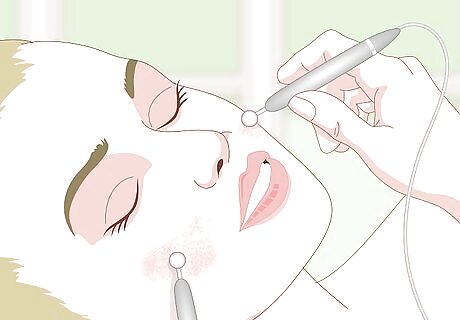
Check into dermabrasion for acne scars or pox marks. Much like chemical peels, dermabrasion is typically used to give skin a smoother surface. This treatment involves the use of a motorized wire brush. Your surgeon will use the brush to safely wear down scar tissue. The procedure is typically quick, but you will be awake and may experience some discomfort. Your doctor may ask you to stop taking certain medications, such as aspirin and some skin care products, before the procedure. You should also avoid smoking for as long as possible both before and after the procedure. As you recover from dermabrasion, protect your skin by wearing sunscreen, cleaning the area regularly, and using ointments as recommended by your doctor to promote healing.
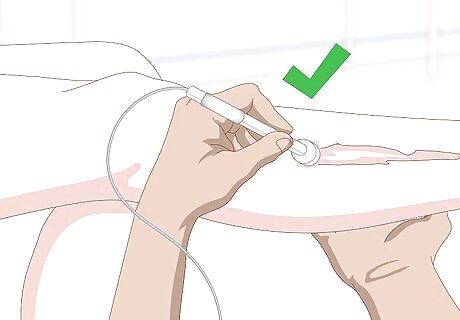
Look into laser treatments for severe scars. While laser treatments can’t actually get rid of a scar, they can seriously reduce its appearance and improve other complications associated with scar tissue, such as pain, itching, and stiffness. If you have a severe scar, ask your doctor about getting light or laser therapy. The effectiveness of this treatment will depend on a lot of factors, including any medical conditions you have and any medications you are currently taking. Give your doctor or dermatologist detailed information about your health before attempting laser therapy. Follow your doctor’s home care instructions carefully to maximize the effectiveness of the treatment. For example, you’ll need to protect the area from the sun after the treatment until it fully heals. Certain medications, supplements, or recreational drugs can delay the healing process and make laser treatment less effective. These include tobacco, vitamin E, aspirin, and topical medications that contain glycolic acid or retinoids.
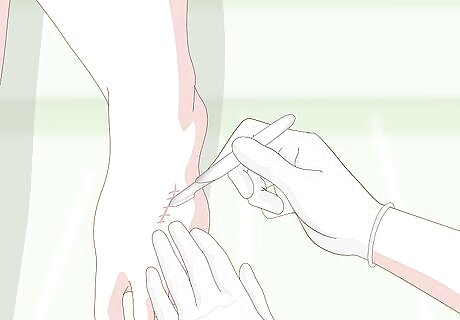
Talk to your doctor about surgical scar revision. If you have a bothersome scar and other treatments aren’t working, talk to your doctor about surgical treatment options. With surgery, scars can be thinned, shortened, disguised, or even hidden in places like wrinkles and hairlines. If you choose to get surgical revision for a scar, it’s important to keep your expectations realistic. This treatment may not completely eliminate the scar, and you may also need multiple procedures in order to get the best results. Not all scars are good candidates for surgical correction. Ask your doctor, dermatologist, or plastic surgeon if this treatment is a good option for you. Scar revision surgery works best on scars that are at least 12-18 months old.
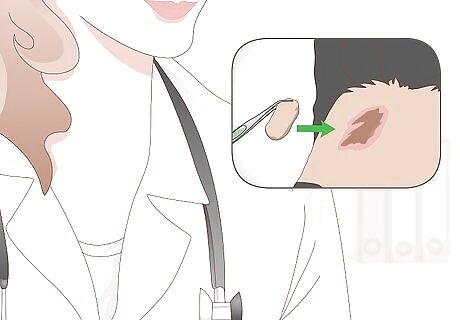
Ask your doctor about punch grafts for very deep scars. In this procedure, your surgeon will take a small piece of normal, healthy skin and use it to replace your scar tissue. They will cut away the scarred tissue and graft the healthy skin into its place. Ask your doctor if a punch graft is appropriate for your type of scar. The skin for the graft is typically taken from behind your ear lobe. You may need a resurfacing treatment a few weeks after the surgery to correct any differences in color and texture between the grafted skin and the skin around it. Follow your doctor’s care instructions for treating your skin both before and after the surgery for the best results.
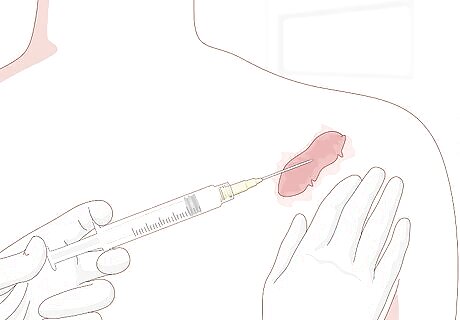
Check into cryosurgery for thick or raised scars. In cryosurgery, your doctor will inject liquid nitrogen into the scar to freeze the scar tissue. This will cause the tissue to die and eventually fall off. You will need to treat the resulting wound carefully to ensure that it heals properly. It may take several weeks for the scar tissue to come off, and several more weeks for the area to heal. Follow your doctor’s home care instructions carefully. They will show you how to dress the wound and keep it clean. Your doctor will probably also provide medications to help you manage any pain during and after the treatment. Cryosurgery may affect your skin color or pigmentation.

Get cortisone injections to soften hard scars. These steroid injections help shrink and flatten tough scars. They are especially good at reducing hypertrophic scars and keloids, which are scars that result from an overly aggressive healing process. In most cases, you’ll need to get cortisone injections every 4 or 6 weeks until the treatment takes effect.Ask your doctor if this treatment is a good option for you. Cortisone injections often work best when combined with other treatments, such as cryosurgery. Your doctor may combine the steroid injection with a local anesthetic to reduce pain. Cortisone injections could possibly lead to skin atrophy, skin ulcers, as well as hypo- or hyperpigmentation.
Preventing and Reducing Scarring
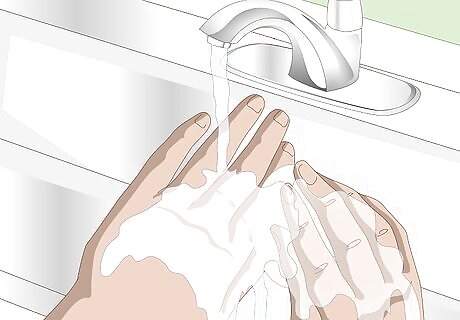
Clean fresh wounds regularly. If you get a wound, keeping the area clean can help prevent infections, irritation, and scarring. Wash the area daily with gentle soap and warm water to remove germs, dirt, and debris. Avoid soaps that contain harsh perfumes and dyes. If you’re getting medical treatment for your wound, follow your doctor’s instructions for cleaning and dressing it. Don’t worry about using antibacterial soap. Studies show that they are no more effective at preventing infections than regular soaps, and may do more harm than good. I want to speed up the healing process. "I've had self-harm scars for a year now. They've mostly healed, but they're still noticeable. I'm starting at a new school, and don't want my new friends to be scared or make fun of me. I just really want to speed up the process before summer." - Kate R. Helpful for healing a scar from stitches. "I was with my friend and I got hit with a golf ball. I had to get stitches on my forehead. I ended up with a big scar there, so I followed the steps in this article and it worked! Now the scar is completely gone." - Alyssa N. Aloe Vera, Tea Tree Oil, and Lemon juice worked! "These three treatments were all beneficial in fading the scars on my legs, and face. They also proved to have helped in lightening my skin discoloration on my knees, neck, underarms, and elbows." - Dela M. Lemon and honey work wonders. "The blackheads were terrible on my face, and I started using cinnamon and honey for a week. When I learned of lemon juice, I switched to lemon and honey, which has worked really well!" - Vitalin Phiri Z. We want to hear from you! Advice from our readers makes our articles better. If you have a story you’d like to share, tell us here.
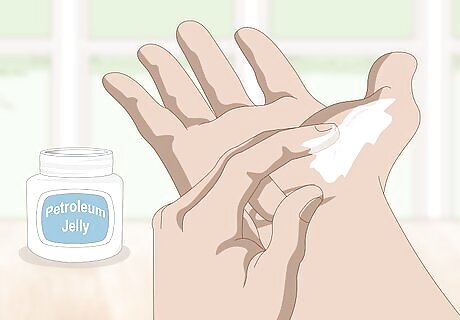
Keep wounds hydrated with petroleum jelly while they heal. Wounds that develop scabs are more likely to leave scars. To prevent scabbing, always cover your clean wound with hydrating petroleum jelly, such as Vaseline. Cover the wound with a bandage to keep it clean and hydrated. Change the bandage, clean the wound, and reapply the petroleum jelly daily or any time the bandage gets wet or dirty.
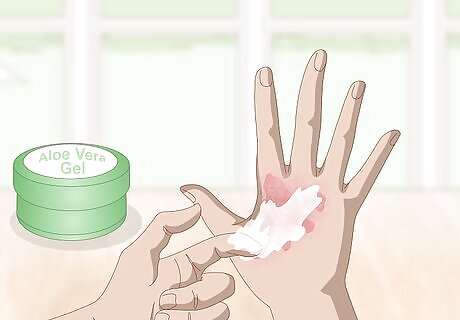
Treat burn wounds with aloe vera gel. Medical researchers have found that aloe helps promote the healing of burn wounds more effectively than petroleum jelly. To minimize scarring, apply 100% aloe gel to the wound daily until the burn heals. If you have a third degree burn or a second degree burn that is larger than 3 inches (7.6 cm) across, seek medical care immediately. Don’t try to treat a severe burn on your own. You can also ask your doctor for a silver sulfadiazine prescription to help prevent infections for second- or third-degree burns.
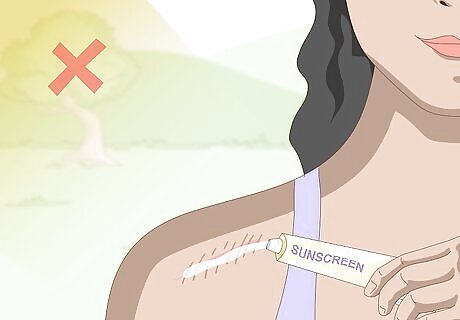
Protect your scar from direct sunlight as it heals. Even after your wound has healed, it’s important to keep protecting the area in order to minimize any potential scarring. If you have a fresh scar after the wound heals, put sunscreen on it or cover it with protective clothing (such as long sleeves) until it fades or disappears. Use a sunscreen with an SPF of at least 30. If you have a scar from surgery, your surgeon will probably recommend that you keep it protected from the sun for at least 1 year.
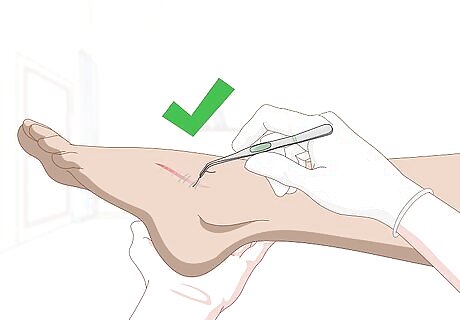
Get any stitches removed when your doctor recommends it. If you have a wound that requires stitches, you can minimize potential scarring by having the stitches removed in the timeframe that your doctor recommends. Taking the stitches out too late or too early may result in more severe scarring. Don’t attempt to remove the stitches on your own. Visit your doctor’s office and ask them to remove the stitches for you. Get stitches on your face removed after 3-5 days, on your scalp and chest after 7-10 days, and on your limbs after 10-14 days.




















Comments
0 comment